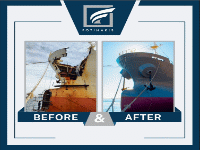Innovative Leasing Strategies Empower Fleets with Enhanced Cost Management
According to Mattimore, the benefits of full-service leasing extend beyond just the initial costs.(Penske)
When fleet managers consider leasing trucks, they often juggle expenses and potential risks while exploring various leasing options. Both full-service and unbundled leases have distinct pros and cons; the best choice hinges on each fleet’s unique needs and goals.
brian Antonellis, senior VP of fleet operations at Fleet Advantage—a firm specializing in truck leasing—emphasizes that understanding contract details is crucial for fleets. “The full-service model simplifies things,” he notes. “Though, it usually comes with a higher price tag.”
He explains that providers of full-service leases manage everything from registrations to maintenance issues like tire replacements or breakdowns—but this convenience dose come at a premium compared to unbundling these services.
The Perks of Predictability
Matt Svancara from Aim Leasing Company highlights that a full-service lease offers predictable monthly costs for fleets throughout the lease term. “You’re essentially paying one bill along with mileage fees,” he says. “This covers all aspects of operating your vehicle.”
Penske’s Kevin Mattimore adds that the advantages go beyond just vehicle costs; they also alleviate administrative burdens for operators. He likens it to car leasing—where you might see your provider again years later—while commercial relationships are ongoing.
Diving into Unbundled Leasing
Lairsen points out that while FSLs typically include standard maintenance like tire changes or annual inspections, lessees may end up spending more than anticipated.
Jacob Brazier notes data indicating an average FSL can cost around 7 cents per mile in its first year versus only about 2 cents per mile for actual operational expenses.
“There’s a significant difference there,” he remarks. “How can we help you recoup some of those costs?”
Proponents on both sides agree there’s ample room in the market for both types of leases as companies navigate their financial strategies.
Aaron Thompson emphasizes how unbundled leases work well for mixed fleets where basic maintenance capabilities exist within smaller operations.
He explains how smaller fleets can leverage larger companies’ purchasing power to reduce routine supply costs while managing their own repairs efficiently.
Antonellis reiterates Fleet Advantage’s role in helping customers assess their total lease expenses against operational costs effectively.
“Different fleets have different needs,” he states. “By dissecting each component’s cost separately, significant savings can be achieved without sacrificing benefits.”
navigating Life Cycle Management
The early stages of truck ownership are generally less costly due to warranties covering repairs; however, as time passes, those expenses tend to rise sharply. Knowing when it’s time to trade-in is essential—and should be evaluated on an individual basis.
“Trucks might start at around two cents per mile during year one but could escalate up to ten cents by year five,” Antonellis explains.
“If only it were as simple as running them until five years or half a million miles! Each truck has its own journey.”
Lessees frequently enough assess vehicles nearing lease-end based on usage patterns—some might potentially be lightly used while others face heavier demands.
“Ultimately,” Antonellis concludes,
“we aim for effective life cycle management tailored specifically around actual usage.”
Certain businesses prioritize having newer models equipped with cutting-edge technology over holding onto older assets longer.
Mike Willey from PacLease mentions,
“Fleets needing vehicles temporarily benefit greatly from full-service options—they avoid long-term commitments yet still access necessary equipment.”
Carlos Mendiola at Ryder System highlights how swift access to reliable maintenance drives many lessees’ decisions.
“Most small fleets prefer focusing solely on their core business rather than managing trucks themselves,” he shares.
A Range Of Choices Available!
Both advocates argue there’s plenty of space in today’s market landscape for either type over outright purchases.
Lairsen observes shorter lease terms appeal particularly well among those opting into unbundling arrangements:“Exiting equipment before warranties expire helps mitigate rising repair bills.”
Mendiola acknowledges current freight cycles remain unpredictable due largely due external factors affecting overall economic conditions:“We provide stability through our buying power during uncertain times.”
Content Original Link:
" target="_blank">



















































